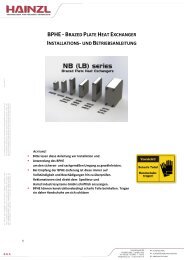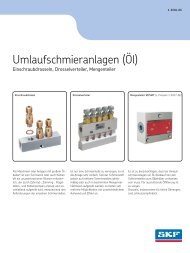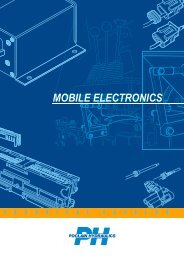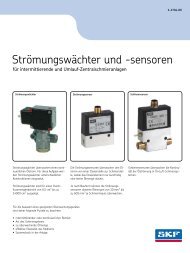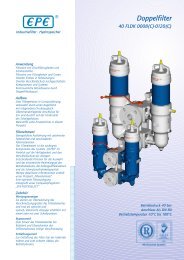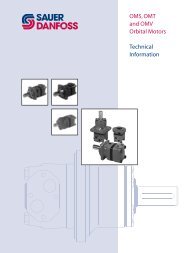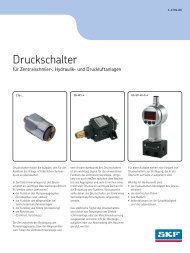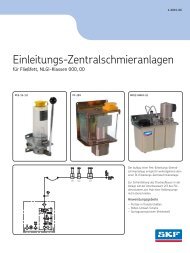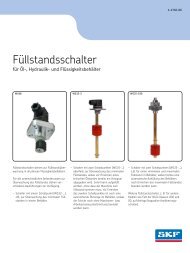Catalogue
Catalogue
Catalogue
You also want an ePaper? Increase the reach of your titles
YUMPU automatically turns print PDFs into web optimized ePapers that Google loves.
POCLAIN HYDRAULICS<br />
VB Brake Valves<br />
ZONE D<br />
ZONE B<br />
ZONE E<br />
Emergency /<br />
Parking brake<br />
ZONE A<br />
Service<br />
brake<br />
ZONE C<br />
Service brake<br />
+ inching<br />
Temperature<br />
Zone A Zone of maximum efficiency.<br />
In this zone, temperature variations have a weak effect on the response time, efficiency and life expectancy of<br />
the components.<br />
Poclain Hydraulics components can operate at all speeds, pressures and powers specified in their technical<br />
documentation.<br />
Zone B High speeds can lead to vibrations and drops in mechanical efficiency. The booster pump can cavitate if the<br />
intake conditions are too tight but without risk for the system as long as the pump remains boosted.<br />
The Poclain Hydraulics components can operate at the pressures specified in their documentation but it is not<br />
advisable to use the pumps at full displacement.<br />
In a translation circuit, a rapid rise in the pump speed from zone B is allowed, but ordering the translation when<br />
the temperature has reached zone A is recommended.<br />
Zone C The efficiency is less and the use of effective antiwear additives is required.<br />
The Poclain hydraulics components can temporarily operate at a power under 20 to 50% of that stated in the<br />
technical documentation, or during 20% of the operating time at the stated power.<br />
Zone D The stated restrictions for zone B likewise apply to zone D.<br />
Further, the pumps must startup at low speed and no displacement. They must not be used in their normal<br />
operating conditions as long as the booster pressure has not stabilized and the hydraulic fluid temperature in<br />
the reservoir has not come up to zone B.<br />
Zone E The efficiency is reduced and the risk of wear on the pump and hydraulic fluid is increased.<br />
The system can operate in zone E at low-pressure and during short periods.<br />
The temperature of the hydraulic fluid in the power circuit must not be more than 10°C above the temperature of<br />
the hydraulic fluid in the reservoir, and must not be more than 20°C warmer than the hydraulic fluid in the<br />
components’ cases.<br />
Steering assist<br />
brake<br />
Accumulator<br />
charging<br />
Full power<br />
brake<br />
Installation<br />
Options<br />
25/09/2009 79



